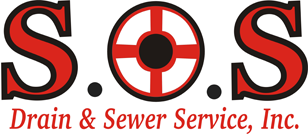Slow drains can be a common and frustrating problem for many homeowners. When the water in your sink, shower, or bathtub takes longer than usual to drain, it is a clear indication of slow drainage. This issue not only disrupts daily tasks but can also lead to unpleasant odors and even potential health hazards if left untreated.
There are several factors that could contribute to slow drains, and identifying the root cause is essential in finding an effective solution.
In this article, we will discuss some of the most common causes of slow drains and provide tips on how to prevent them from happening in the future. By understanding these causes and taking preventative measures, you can keep your drains running smoothly and avoid any potential plumbing disasters.
What Is A Slow Drain?
A slow drain occurs when water takes longer than usual to flow out of your sink, shower, or bathtub. It may also be characterized by gurgling sounds or an unpleasant odor coming from the drain.
This is a common problem that many homeowners face, and it can be caused by a variety of reasons. Some cases of slow drains can be easily fixed with simple at-home solutions, while others may require professional assistance.
Slow drains are not only inconvenient but can also indicate underlying plumbing issues that could potentially lead to more significant problems if left unresolved. That’s why it’s essential to address this issue promptly and determine the cause so that proper action can be taken.
Top Most Common Causes of Slow Drains
There are many potential causes of slow drains, but some are more common than others. These include:
Clogged Pipes
Clogged pipes are one of the most common causes of slow drains. Over time, materials such as soap scum, grease, food particles, and other debris can accumulate inside pipes, narrowing the passage through which water flows.
This accumulation slows down draining and may eventually lead to complete blockages if not addressed. Regularly cleaning your pipes with natural or commercial drain cleaners can help prevent buildup. Additionally, being mindful of what goes down the drain, such as avoiding pouring grease or disposing of non-soluble items, can significantly reduce the risk of clogs.
If home remedies fail to clear a clog, it might be necessary to call a professional drain cleaner to thoroughly inspect and clean the pipes.
Buildup of Debris and Grime
Debris and grime buildup is another frequent contributor to slow drains. Everyday items like soap, toothpaste, and cleaning products can leave behind residues that adhere to the sides of pipes, gradually restricting water flow.
This can be exacerbated by the mineral deposits found in hard water, which add to the buildup. Regular maintenance, such as using a mixture of baking soda and vinegar to clean out pipes, can help break down these residues.
Additionally, installing strainers or traps can effectively catch larger particles before they enter your plumbing system, reducing the amount of buildup over time.
Hair Accumulation
Hair accumulation is a common problem in bathroom drains, particularly in showers and bathtubs. As hair sheds during bathing, it can easily become tangled and trapped in drains, where it combines with soap, conditioner, and other similar products.
This mixture creates persistent clogs that obstruct water flow. Regularly removing visible hair from drains and using protective drain covers can help catch hair before it enters the plumbing system.
For existing clogs, tools like a drain cleaner’s snake or commercial drain cleaners designed to dislodge hair may be necessary. Routine maintenance and preventive measures ensure hair accumulation doesn’t worsen, keeping drains flowing smoothly.
Tree Roots in the Sewer Line
Tree roots invading sewer lines can be a significant cause of slow drains, particularly for those with older plumbing systems. Roots are naturally attracted to the moisture in sewer pipes, and even small cracks or leaks can invite root intrusion.
Once inside, roots can grow, entangle and obstruct the flow of water and waste, causing persistent drainage issues. Regular inspections and maintenance of sewer lines, especially if you have large trees near your plumbing system, are crucial in preventing root-related blockages.
In severe cases, professional intervention may be necessary, such as using special augers or root-cutting machinery to clear the intrusion and repair damaged pipes.
Broken or Collapsed Pipes
Broken or collapsed pipes are severe problems that can cause slow drains and require immediate attention.
Over time, pipes can become worn out due to age, soil shift, or external pressure, leading to cracks or complete collapses. These conditions restrict or block water flow, causing slow drainage. Telltale signs may include wet areas around your yard, unusually lush patches of grass, or persistent slow draining.
Addressing this issue typically involves a thorough inspection using specialized cameras to identify the damage’s extent and location. Repair options may include pipe relining or replacement, both of which require professional plumbing services to ensure effective solutions.
Plumbing Vent Blockage
Plumbing vent blockages are a less obvious but important cause of slow drains. Vent pipes allow air to enter the plumbing system, ensuring water flows smoothly and preventing vacuum formations that impede draining.
Obstructions, often caused by leaves, bird nests, or debris, can block these vents. This blockage leads to slow drainage and gurgling sounds in the pipes. Regularly inspecting and clearing vents of debris can prevent such blockages.
If a blockage is suspected, a professional drain cleaner can safely and efficiently remove the obstruction, restoring proper air flow and drain function, thus preventing further plumbing complications.
Improperly Installed Plumbing System
An improperly installed plumbing system can lead to chronic slow drain issues. If pipes are incorrectly sized, poorly sloped, or improperly connected, water may not flow efficiently, resulting in sluggish drainage.
This can also lead to recurring clogs and excessive wear on your plumbing system. Consulting with a professional drain cleaner during installation or renovation ensures that the plumbing system is correctly designed and implemented according to local building codes and standards.
For existing plumbing issues, a thorough inspection by a professional can identify installation errors and recommend corrective actions, potentially saving thousands in future repair costs and enhancing system efficiency.
Does Slow Drainage Always Indicate a Problem?
While slow drainage can often indicate underlying issues within a plumbing system, it does not always signify a significant problem.
Minor clogs from hair or debris can cause temporary slowdowns, which are usually easy to resolve with simple cleaning methods or natural solutions, such as baking soda and vinegar.
Additionally, temporary obstructions might be seasonal, caused by increased usage during particular times, like holidays.
However, persistent slow drainage should not be ignored, as it might suggest more severe issues, such as pipe damage or root intrusion, that could lead to costly repairs if not addressed promptly. Regular maintenance and inspections are essential to distinguish between minor inconveniences and more serious underlying problems.
Consulting a plumbing professional can provide clarity and ensure the health of your plumbing system, preventing potential damage and maintaining efficient water flow in the long term.
How Much Does it Cost to Fix Slow Drains?
The cost of fixing slow drains depends on the underlying cause and severity of the issue. Minor clogs or obstructions can often be addressed with simple home remedies or basic plumbing tools, such as a plunger.
However, more severe blockages or damage may require professional intervention and specialized equipment, which can increase costs significantly.
On average, addressing slow drains due to clogs or minor issues can range from $100-$300. More complex problems involving tree root intrusion, collapsed pipes, or improper installation can cost anywhere from $500-$2000.
Preventive measures and regular maintenance are recommended not only to prevent costly repairs but also to ensure efficient water flow and the longevity of your plumbing system. So, taking care of slow drains promptly can save you from expensive repairs in the future. Thus, monitoring water flow and addressing any issues as soon as possible is crucial in maintaining a healthy plumbing system and avoiding disruptions to your daily routine.
Choose S.O.S Drain & Sewer Services For Your Next Drain and Sewer Cleaning Needs
At S.O.S Drain & Sewer Services, we are committed to providing high quality and efficient drain and sewer cleaning services for both residential and commercial clients.
With over 80 years of experience, we have become a trusted name in Minneapolis and St. Paul, offering a wide range of services.
Our Sewer Cleaning is perfect for preventing expensive pipe and property repairs, while our Roof Drain Cleaning services ensure the safety of your building’s structure.
Our technicians are highly trained and use the latest techniques and equipment to quickly detect and fix any issues with your drains and sewers. So choose S.O.S Drain & Sewer Services for your next drain and sewer cleaning needs!
FAQs
What are the typical reasons for a slow draining sink in bathroom sinks?
A slow draining sink in bathroom sinks is often caused by build-up of hair, soap scum, and debris in the sink drain or bathroom sink drain. This accumulation restricts water flow, leading to a clogged drain and inefficient drainage.
How does a drain stopper contribute to a slow draining sink?
A malfunctioning or improperly fitted drain stopper can trap debris in bathroom sink drains, causing blockages in the drain pipe. Regular cleaning and correct installation of the sink stopper can help maintain proper water flow.
Can chemical drain cleaners effectively address a clogged drain?
Chemical drain cleaners can sometimes clear minor blockages in a clogged drain by breaking down debris. However, they might not remove all obstructions and could damage pipes over time. For persistent issues, professional drain cleaning is recommended.
Why is it important to maintain both your main sewer line and septic tank to prevent slow drains?
Proper maintenance of the main sewer line and septic tank is crucial to avoid backups that can lead to slow drains. Regular inspections and cleanings ensure that waste is properly processed, reducing the risk of blockages that affect your sink drain.








